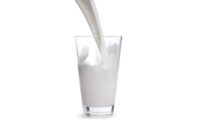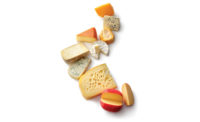The last year or so might have found some players in the retail butter and butter blends category exclaiming, “It’s a jungle out there!” Why? Because certain players in the margarine and spreads subcategory used innovation and questionable marketing (Country Crock “plant butter” — seriously?) to lure consumers and intimidate genuine butter brands.
As a result, the retail margarine and spreads subcategory saw strong growth. Data from Chicago-based market research firm IRI show a 9.6% jump in dollar sales (to $1,396.0 million) and a 7.8% increase in unit sales (to 578.2 million) during the 52 weeks ending Sept. 6, 2020.
Milk | Cheese | Cultured | Ice Cream | Butter | Non-dairy Beverages | Ingredients | Exports
However, the refrigerated butter subcategory has been adept at taming the plant-based beast. Dollar sales within the subcategory skyrocketed 17.5% to reach $3,306.6 million, while unit sales climbed 18.2% to 893.8 million. Refrigerated butter blends also performed very well, with dollar sales rising 16.9% to $404.9 million, and unit sales increasing 11.4% to 104.9 million.
A premium performance
Retail sales of genuine butter have been growing over the past few years, thanks in part to at least one major study (https://bit.ly/347cIUK) suggesting the creamy product is not the health threat it once was thought to be. But growth also can be attributed to innovation that meshes with today’s consumer wants and needs.
For example, you will find an abundance of new premium butter items — offering a higher butterfat content — at retail, says Jim Feeney, senior sales director for Novi, Mich.-based Michigan Milk Producers Association (MMPI).
Madilyn Ray, director of product development for Visalia, Calif.-headquartered California Dairies Inc., agrees, noting that such products fit in well with the trends toward nostalgia and comfort in foods.
“We see many brands promoting higher butterfat in their products, above the typical 80-82%, even up to 86% butterfat,” she says. “These extra-creamy premium butters can add an indulgent, comforting touch to any home recipe that feels special.”
Much of the innovation in the premium butter space can be found in the marketing tactics used by the brands, Feeney says.
“We see more colorful, bold packaging on shelves as companies try to raise consumer awareness and stand out from the traditional butter offerings,” he notes. “As global pressures and butter imports are impacting the market, we see these premium varieties working to offset the trends and differentiate themselves from the traditional USDA Grade A butter.”
Speaking of packaging, new formats also are adding interest to the butter segment. For example, Minerva Dairy launched a version of its premium (85% butterfat) hand-rolled butter in a smaller, “more-appealing” 1-pound size this summer. One unexpected bonus of the resizing, the Minerva, Ohio-based company says, is optimized shelf space at the retail level — an advantage that is already opening doors to greater distribution opportunities, including a major rollout in Target stores.
That type of downsizing could draw attention on the stick side of butter, too, Feeney suggests.
“We are seeing the availability of two-packs of butter over the traditional four-packs,” he says. “Consumers are looking for options out there, and the smaller size may allow them to try new things.”
Wielding the flavor chair
Flavored butters also are bringing innovation to the retail butter segment — and appealing to consumers’ increasingly adventurous palates.
“The influence of global cuisines on the American table gives more consumers access to meals as an adventure rather than simple sustenance,” says Thierry Farges, president of sales and marketing for New York-based M.A.D. Foods.
M.A.D. Foods recently added two new flavors to its legacy Aux Délices des Bois butter brand lineup: Roasted Garlic and Red Wine Shallot. According to the company, the butters begin with a minimum of 82% butterfat. The European-style fat content carries the natural flavors better and delivers an above-average mouthfeel. The products retail in 3-ounce tubs.
“Consumers are always looking for new flavors and items that provide more than convenience,” adds Ryan Stalker, marketing director, retail butter and spreads for Arden Hills, Minn.-based Land O’Lakes Inc.
And such items do not necessarily have to fall within the savory space. Land O’Lakes, for example, recently released Land O Lakes Maple Me Crazy butter spread. The limited-edition product is said to be a “sweet combination of sweet cream, maple syrup and brown sugar”; it comes in a 6.5-ounce tub.
Finishing butters — compound butters featuring added ingredients — also are shaking up the butter aisle.
“While finishing butters aren’t new — we introduced Black and White Truffle butters to the market in 2006 — the applications of flavored butters make this category a new, exciting market leader,” Farges points out. “Finishing butters boost ordinary recipes by delivering a holy trinity of convenience, spirited flavor and luscious mouthfeel.”
M.A.D. Foods recently introduced five finishing butter varieties under the Butter Craft Provisions brand: Black Truffle, Roasted Garlic, Parmesan Herb, Bold Ranch and Fire-Roasted Jalapeño. The products contain butter with 82% butterfat and retail in 3-ounce recyclable tubs.
But some flavored butters and finishing butters do have their drawbacks, Feeney suggests.
“New flavors are often seasonal or regional and can struggle to sustain long-term momentum,” he says. “On the flip side, any chance you have to lead a consumer to butter can lead to repeat consumption.”
Also resonating with consumers are new products that align with their values.
“The industry is responding by communicating how their organizations align to the values of consumers,” Stalker points out. “For example, Land O’Lakes is a farmer-owned dairy co-op. This isn’t new, but this is not something that all consumers realize. Another example is Vermont Creamery, which is a Certified B Corp.”
That meshes with the ongoing trend toward transparency.
“Transparency is important to consumers, and as more consumers do their research, they continue to drift toward transparent brands,” notes Venae Watts, a fifth-generation Minerva Dairy family member. “We are in a perfect position to deliver what the informed consumer is looking for.”
Adjusting the act
Despite all of the innovation and resulting growth, the butter and butter spreads category does face some challenges. One such challenge, Feeney says, is imported butter.
“Lower global pricing is allowing imports to come in and compete with domestic product,” he notes. “This doesn’t help any of us, bulk or retail. Furthermore, the impact of COVID-19 on foodservice markets has persisted, which limits the channels through which a lot of butter around the country is sold.”
For its part, MMPI is identifying premium retail opportunities, as it wants to expand outside of foodservice. Such diversification, Feeney says, will allow the company to “react to any continued and future challenges.”
Farges also points to COVID-19-related disruption on the retail side. The pandemic incited a buying spree that hit food producers, including butter manufacturers, hard.
“Recyclable plastic containers, glass jars and lids, and even shipping cartons now require long-range projections and top-dollar commitments from producers large and small,” he points out. “We addressed a label printing challenge by direct-printing on our 3-ounce butter cups and lids. … We have kept up with our distributors’ orders through careful daily analytics, frank communication with buyers, adaptation of sales tools and evaluation of new equipment.”
Of course, the pandemic brought with it a few positives — at least for butter processors that play in the retail space.
“COVID provided the opportunity for exciting innovation because it gave exponential growth to the trending-upward butter category as eating habits changed quickly and more people were introduced to consuming butter in the home,” Watts says.
What’s more, increased product demand — despite the less-than-fortunate circumstances contributing to it — is never a bad thing.
“This year we have seen a dramatic increase in retail butter sales as more people are baking and preparing meals at home,” Ray says. “One of our biggest challenges has been simply keeping up with the demand, which, given the alternative, is a great problem to have.”
Milk | Cheese | Cultured | Ice Cream | Butter | Non-dairy Beverages | Ingredients | Exports








